Brunnen der vier Flüsse auf der Piazza Navona von Gian Lorenzo Bernini Stockfotografie Alamy

The Fountain of the Four Rivers, Bernini’s masterpiece, on the Piazza Navona. Rome, Italy. On
Piazza Navona Tours & Tickets are Selling Out Fast. Book Now to Avoid Disappointment. Quick & Easy Purchase Process! Full Refund Available up to 24 Hours Before Your Tour Date

Piazza Navona Fountains Travel Through Italy
Der Vierströmebrunnen ( italienisch Fontana dei Quattro Fiumi) ist ein Monumentalbrunnen in der Mitte der Piazza Navona in Rom. Er wurde in den Jahren 1648-1651 vom Bildhauer Gian Lorenzo Bernini für Papst Innozenz X. geschaffen und gilt als Meisterwerk des Barock . Inhaltsverzeichnis 1 Beschreibung 2 Legende 3 Siehe auch 4 Literatur 5 Weblinks

The Fountain of the Moor, Piazza Navona, Rome Walks in Rome (Est. 2001)
Piazza Navona ist der berühmteste Platz in Rom und ein Muss für Touristen. Hier sind Kunstwerke, Brunnen und Gebäude von großem historischen und kulturellen Wert vereint. Die Piazza Navona in Rom, eine der bekanntesten und malerischsten Plätze Roms, strahlt eine zeitlose Eleganz und einen Hauch von barocker Pracht aus.

Italien, Rom, Piazza Navona, Brunnen der vier Flüsse Stockfotografie Alamy
Der Brunnen der vier Flüsse ist der größte der drei Brunnen auf der Piazza Navona. Das szenografische Werk in der Mitte des Platzes wurde zwischen 1647 und 1651 von Gian Lorenzo Bernini erbaut. Die Riesen aus weißem Marmor auf Travertinbasis (Werk von Giovan Maria Franchi von 1648) sind Aktskulpturen, die die Allegorien der großen Flüsse.
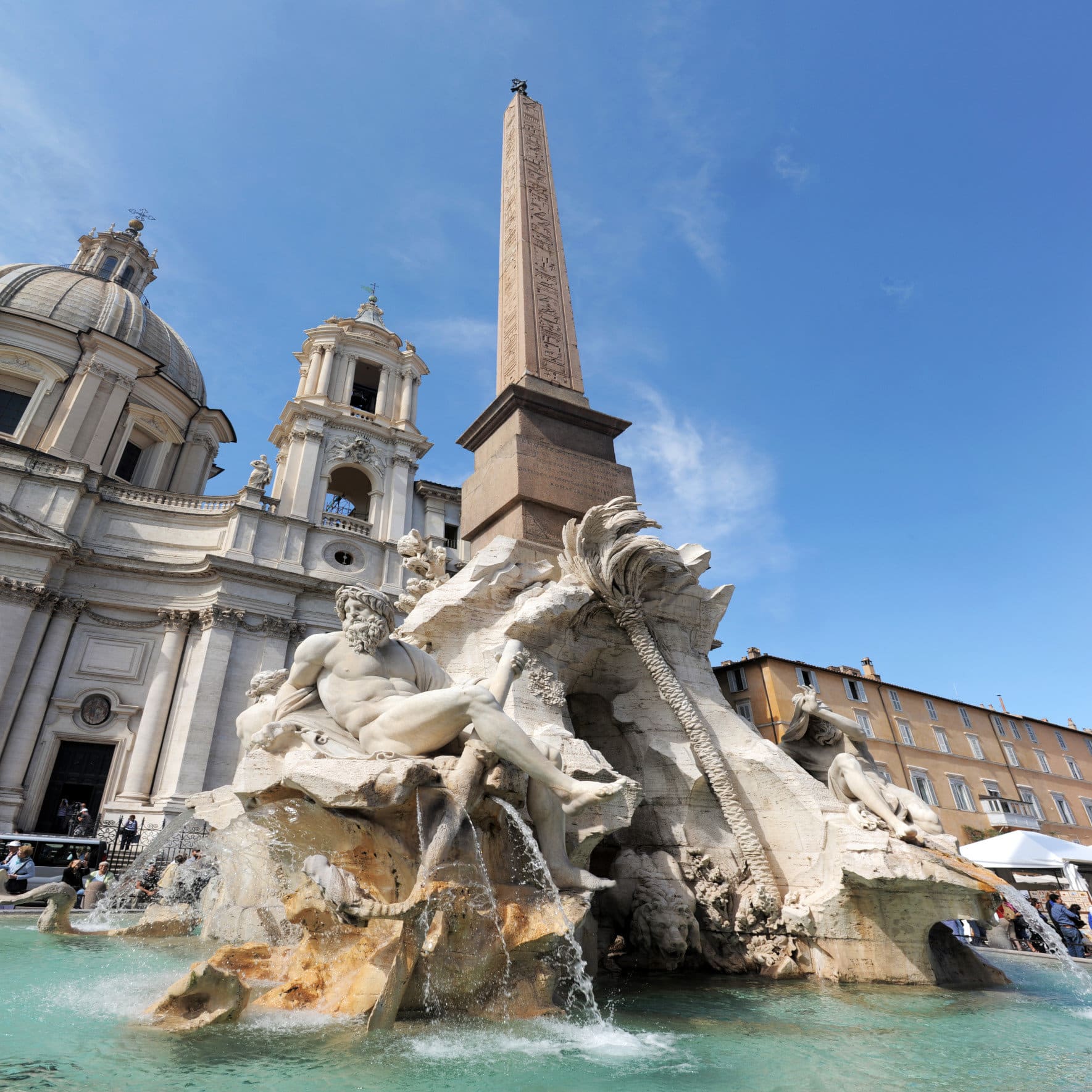
Piazza Navona Colosseum Rome Tickets
Der Piazza Navona ist für viele Römer der schönste Platz ihrer Stadt. Der lange und eher schmale Stadtplatz, im Herzen des heutigen Roms, ist von Gebäuden im Stil des Barock umringt. Highlights auf dem Piazza Navona sind eine wunderschöne Kirche und drei Brunnen.
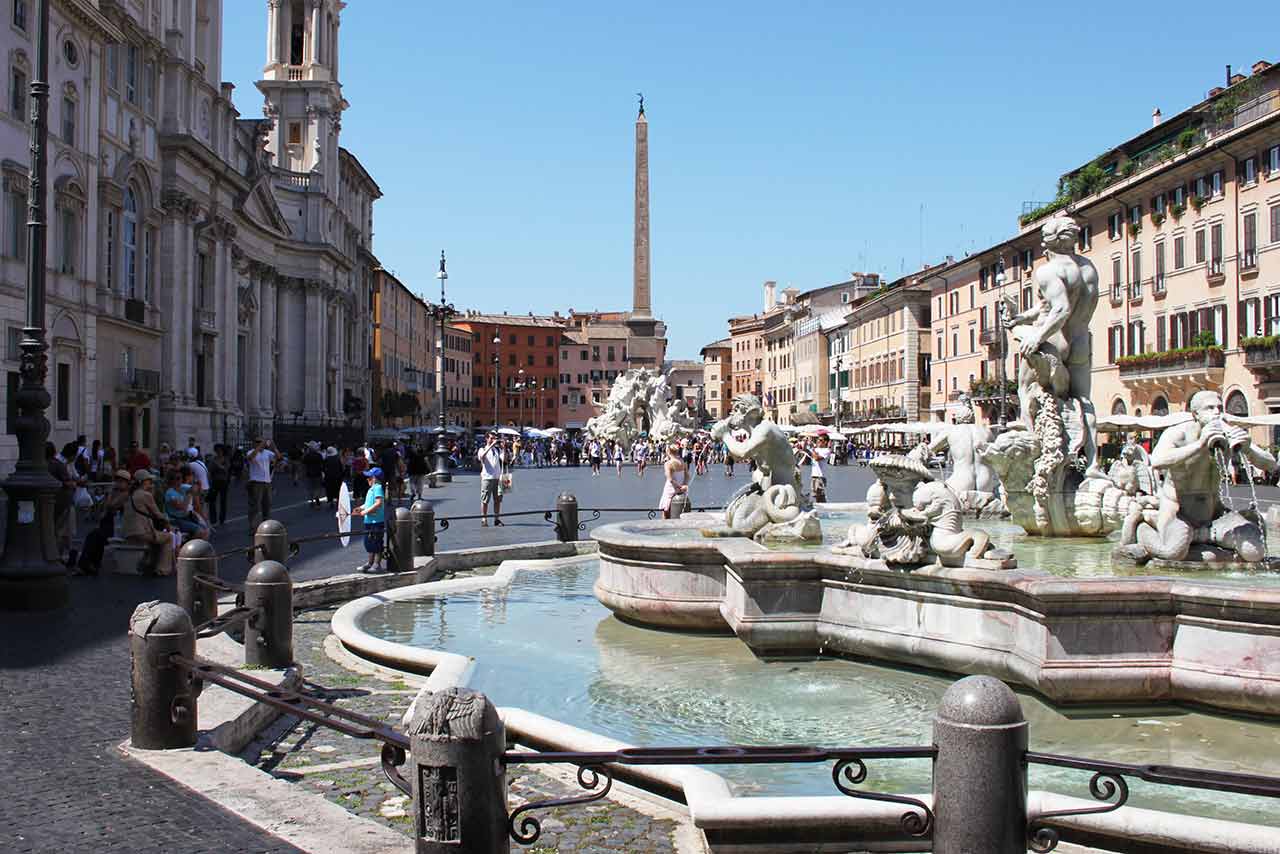
Piazza Navona in Rom Rom mal anders
Nearly 2,000 years later, the distinctive oval shape of present-day Piazza Navona is an ever-present reminder of the site's ancient origins. But it's the golden age of Baroque Rome that truly shaped the space we see today. In the opening decades of the 17th century, the piazza was something of a hodge-podge.

Der Brunnen der vier Ströme (Fontana dei Quattro Fiumi) an der Piazza Navona, Rom, Italien
Adresse: Piazza Navona, 00186 Roma Transport: U-Bahn Haltestelle Spagna (Linie A), von dort aus 1,5 km zu Fuß bis zur Piazza In der Nähe: Gladiatoren Museum (0,1 km) Pantheon (0,3 km) Engelsburg (0,7 km) Trevi Brunnen (0,9 km) Ausgrabungen Piazza Navona Underground Entdecken Sie die spannenden Ausgrabungen an der Piazza Navona:

Fountains on Piazza Navona in Rome. Fountain of the Four Rivers
Full description Enjoy Navona Square, Pantheon and Trevi Fountain with your professional english guide! Meet your guide at Touristation Office in Piazza Navona 25. Take a walk through bustling Piazza Navona, perhaps the most beautiful square in Rome with its magnificent fountains, including the famous Fountain of the 4 Rivers by Bernini.

Piazza Navona Fountains Travel Through Italy
Piazza Navona is one of Rome's most beautiful squares, located right in the historic center. Its unique long, oval shape, brimming with Baroque art and architecture, makes it the perfect place to go for a stroll and soak in the Roman ambiance. Highlights Be awed by the piazza's fountains, including Bernini's majestic centerpiece.
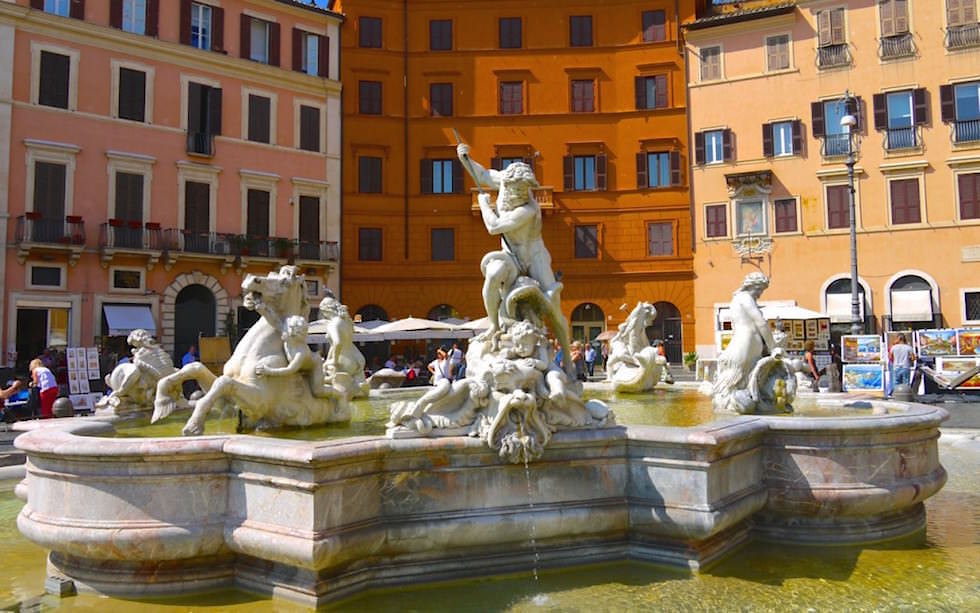
Rom Piazza Navona Die schönste, bunteste Piazza in Rom! Passenger On Earth
Trevi Fountain Vatican Colosseum Campo de Fiori Termini/Monti Jewish Ghetto Hidden Gems of ROME: Piazza Navona Neighborhood 12. Pasquino If you exit on the southwest end of Piazza Navona you'll see Piazza di Pasquino. Here, you'll find the piazza's namesake, Il Pasquino.

a fountain in the middle of a city square with people walking around it at night
Top Attractions Piazzas and fountains Piazza Navona Defined during the fifteenth century, the Baroque-style Piazza Navona is one of the most charming and popular squares in Rome. Piazza Navona Fountain of the Four Rivers Fontana del Moro Fountain of Neptune

Brunnen der vier Flüsse auf der Piazza Navona von Gian Lorenzo Bernini Stockfotografie Alamy
Rome's most famous square, Piazza Navona ★★★, is a gorgeous baroque gem, lined with cafes and restaurants and often crammed with tourists, street artists, and pigeons. Its long, oval shape follows the contours of the old ruined Roman Stadium of Domitian, where chariot races once took place, made over in the mid-17th century by Pope.
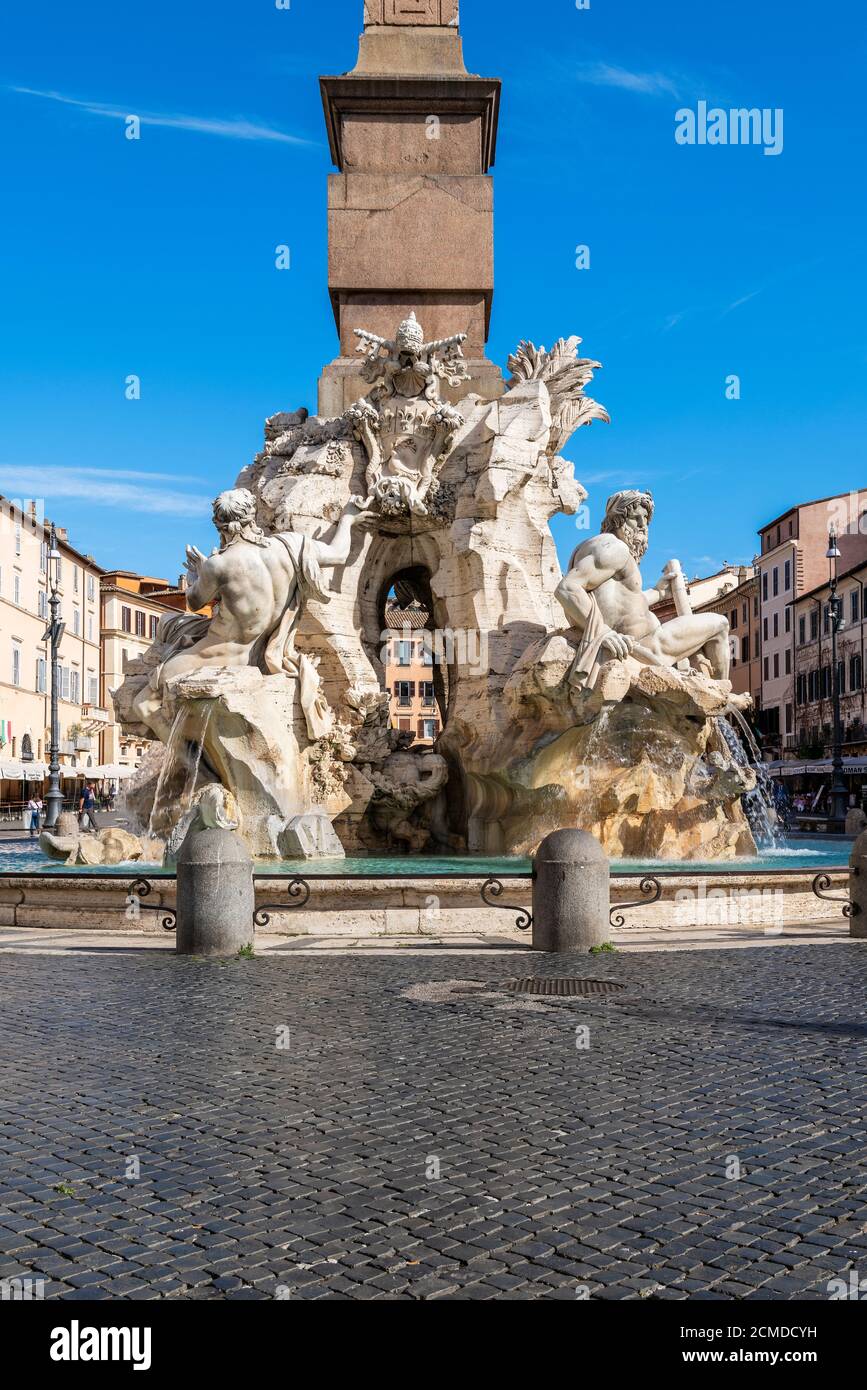
Fontana dei Quattro Fiumi oder Brunnen der vier Flüsse, Piazza Navona, Rom, Latium, Italien
From the shadows of the ancient, winding streets of the historic center you suddenly come upon the breathtaking magnificence of Piazza Navona, born as a place of spectacle and still today a spectacular open air show; an architectural miracle in the heart of the Eternal City, filled with masterpieces in perfect harmony with each other.
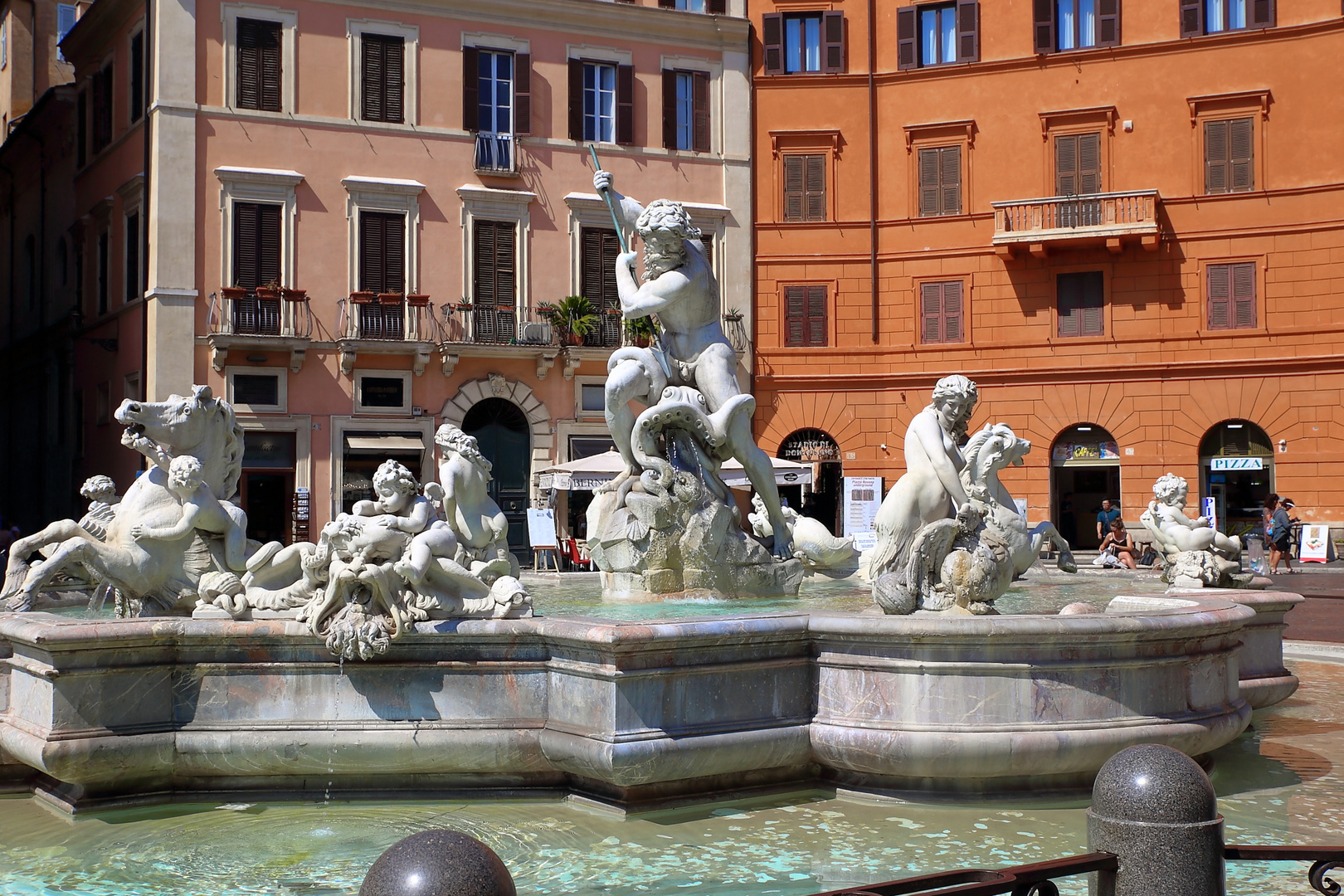
Rom Neptunbrunnen auf der Piazza Navona Foto & Bild architektur, europe, italy, vatican city
Pinterest Planning to check out the beautiful Piazza Navona in Rome? Here's my guide to the history and monuments of the city's most famous piazza. For nearly 400 years, the Piazza Navona has been an artistic jewel at the heart of Rome's centro storico. Piazza Navona is an elegant Renaissance masterpiece sometimes called the Square of Fountains.

Obelisk Fountain In Piazza Navona Photograph by Mats Silvan
Piazza Navona is one of the most beautiful and famous squares in Rome and in the world. It's a splendid Baroque masterpieces with works by Bernini and Borromini. It was built on the perimeter of the ancient Domitian Stadium. Location: Rione Parione Built by: Titus Flavius Vespasian in 85 AD, architect Gian Lorenzo Bernini What to see:

Piazza Navona Brunnen · Kostenloses Foto auf Pixabay
Die Piazza Navona ist einer der charakteristischen Plätze des barocken Rom im Stadtviertel Parione . Inhaltsverzeichnis 1 Das antike Stadion 2 Der Platz im Mittelalter 3 Der barocke Platz - Das Forum Pamphilj 4 Weitere Bauten 5 Siehe auch 6 Literatur 7 Quellen 8 Weblinks Das antike Stadion Reste des antiken Stadions Druck von 1613, Jacopo Lauro